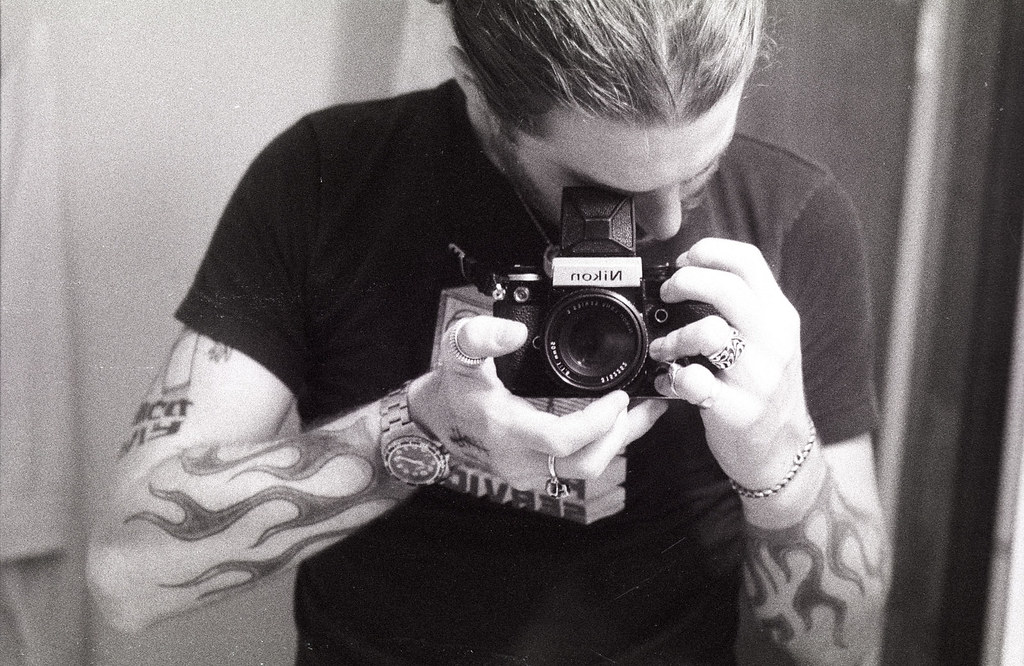First attempt at infrared portraits using efke IR 820.
This is the result of trying to salvage an extremely underexposed negative through scanning. The initial preview showed pure black. I brought out the image by pushing it as far as i could using levels and curves in the Imacon scanning software.
The specs are not grain but minuet amounts of dust that wouldn't usually be scene in a normal scan. Bringing the image out brought the debris out as well.
I don't have any IR filters, so I shot in the dark using modified Vivitar 285HVs, one with a double layer of processed unexposed 35mm Ektachrome (reducing it to about a 1"x2" flash area) and another with a red gel folded over 16 times (acting also as a diffuser).
I metered at 100 iso based on the film's data sheet (25 iso when using IR filters).
The gelled flash produced more visible light metering f/3.5 at about a foot, while the chrome flash produced more pure IR light metering f/8 at about a foot, both at full-power. Though, I'm not entirely sure how well my Sekonic L-358 would meter pure IR light.
I processed in D-76 at 20 degrees celsius for 8 minutes. My chems should be good, but it's possible they could be getting weak.
I'm not sure exactly where everything went wrong.
Next time I will meter at 25 iso. I will use sheets of processed unexposed 4x5 Ektachrome (instead of 35mm) with larger more powerful strobes and/or directly on the lens as a makeshift IR filter.
Mamiya C220
Mamiya-Sekor 80mm f/2.8TLR lens
efke IR 820 120 film
(modified) Vivitar 285HV flash
Imacon multi-format film scanner
There are no setup shots.


No comments:
Post a Comment